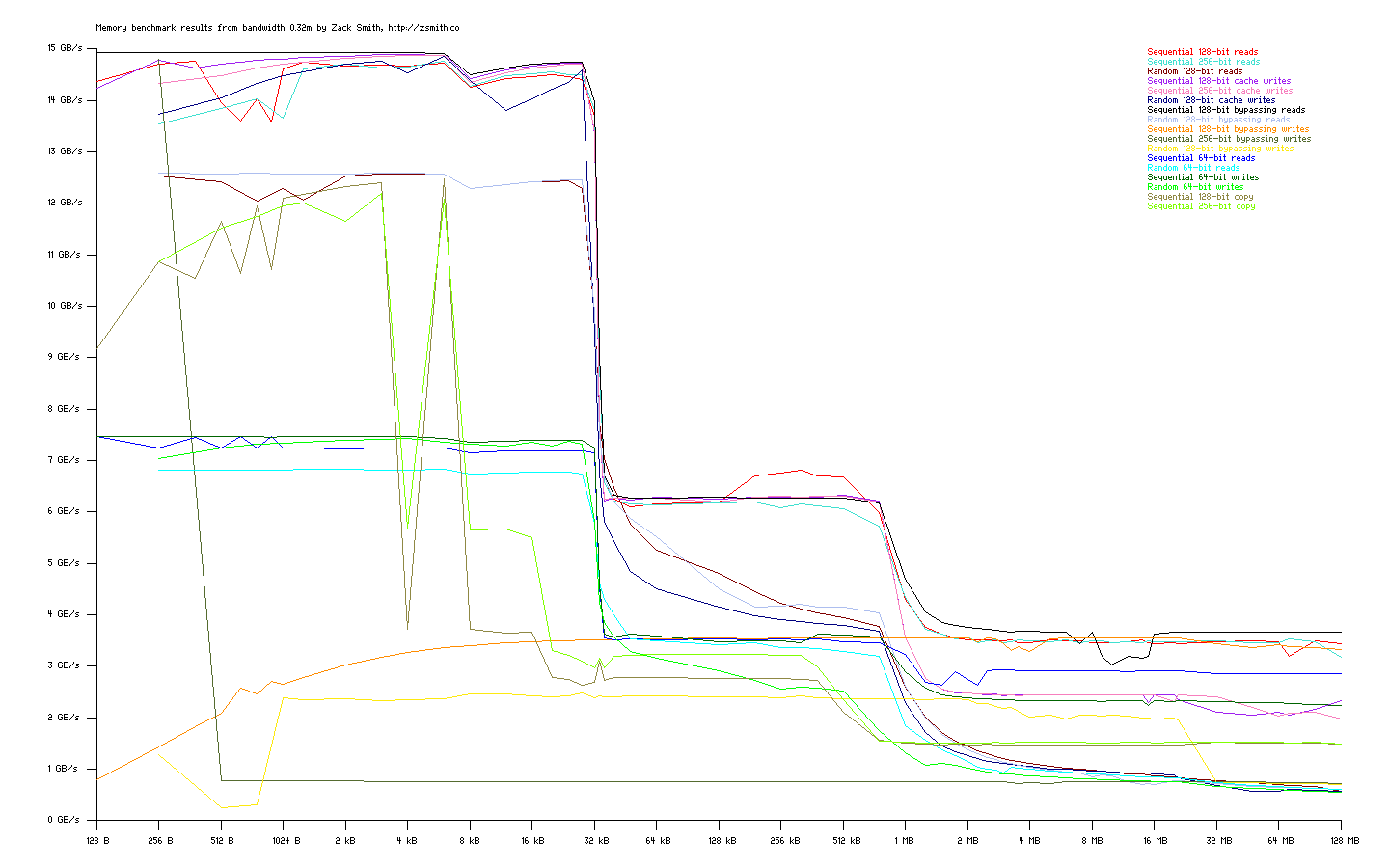Hi I'm here again to show some new stuffs about the AMD Jaguar core that will be present in the PS4 in a 8-core form. The first think you need to know is what the specs of this Jaguar based CPU.
* The specs are abou 1 core only *
The name specs suggest a four-core Mobile ("M") chip running between 0.8 and 2.0GHz core clock... it is the same clock to have the PS4 CPU (2.0Ghz). The chip have a TDP of 25W... so that means the PC4 APU could have a good TDP too.
Now what about the Benchmarks?
Well you can found here https://www.osadl.org/CPU-benchmarks.qa-farm-cpu-benchmarks.0.html, look at the rack #9, slot #1, or "r9s1" but like I'm a good vgcharterz I will try to make a more compreensive table.
| Single-core CPU Unixbench benchmak | |||||||||||
| System | Arch | Name | Cores | BogoMIPS | kDhry | Whet | Execl | kCopy | kPipe | Index | Effective |
| rack9slot1 "r9s1" | x86_64 | Jaguar "Kabini" @ 2.0Ghz | 4 x 1 | 15968 | 13418 | 1224.9 | 1731.1 | 146.83 | 350.2 | 403.8 | 22.04. 18:11 |
| rack8slot7 "r8s7" | armv7l | ARMv7 @ 996MHz | 4 x 1 | 3156 | 217.5 | 3094 | 338.4 | 78.79 | 101.4 | 116.7 | 20.04. 06:07 |
| rack1slot5 "r1s5" | ppc | PPC e500v2 @ 1.2Ghz | 2 x 1 | 400 | 3611 | 543.3 | 258.1 | 73.67 | 178.9 | 119.2 | 03.03. 18:17 |
| rack4slot0 "r4s0" | i686 | i3-2100T @ 2.5Ghz | 2 x 2 | 19952 | 19232 | 2673.5 | 1044.0 | 247.20 | 537.7 | 495.5 | 22.04. 20:16 |
| rack1slot8 "r1s8" | i686 | Atom Z530 @ 1.6Ghz | 1 x 2 | 6399 | 3903 | 555.6 | 1099.0 | 98.86 | 230.8 | 228.8 | 22.04. 20:16 |
| Multi-core CPU Unixbench benchmark | |||||||||||
| System | Arch | Name | Cores | BogoMIPS | kDhry | Whet | Execl | kCopy | kPipe | Index | Effective |
| rack9slot1 "r9s1" | x86_64 | Jaguar "Kabini" @ 2.0Ghz | 4 x 1 | 15968 | 53549 | 4898.6 | 6540.1 | 84.87 | 1383.1 | 840.7 | 22.04. 18:11 |
| rack8slot7 "r8s7" | armv7l | ARMv7 @ 996MHz | 4 x 1 | 3156 | 12310 | 870.5 | 630.5 | 34.33 | 403.2 | 206.9 | 20.04. 06:07 |
| rack1slot5 "r1s5" | ppc | PPC e500v2 @ 1.2Ghz | 2 x 1 | 400 | 7128 | 1088.4 | 414.4 | 0.44 | 354.0 | 54.0 | 03.03. 18:17 |
| rack4slot0 "r4s0" | i686 | i3-2100T @ 2.5Ghz | 2 x 2 | 19952 | 41981 | 9472.7 | 4240.8 | 64.56 | 1227.2 | 749.6 | 22.04. 20:16 |
| rack1slot8 "r1s8" | i686 | Atom Z530 @ 1.6Ghz | 1 x 2 | 6399 | 5363 | 989.2 | 1526.6 | 133.83 | 273.4 | 305.9 | 22.04. 20:16 |
What more? There are a picture with the detailed cache/memory bandwith plot:

Sources
http://citavia.blog.de/2013/04/17/2-ghz-amd-jaguar-benchmarks-15761535/
https://www.osadl.org/QA-Farm-Realtime.qa-farm-about.0.html
Now what theses benchs means? I don't know for sure but while the Jaguar seems weak in single-thread tasks compared to Core i3 in multi-thread it became better in almost all benchs... so a 8-core Jaguar can be a good solution in the end due at the multi-thread power.
I ask for some help to the tech guys here to say what these results means?
Thanks and good night.

























































